What is the Easy Instrument to Play
Music teachers and instructors always have this very positive attitude in them that I admire. They tell aspiring musicians that learning to play an instrument is easy if you have the passion for it. And by passion, they mean commitment, dedication, and focus on what aspiring musicians want to achieve.
While I somewhat agree with this, I think it's a good idea for new musicians to start with an easy instrument to play and then progress to more difficult ones.
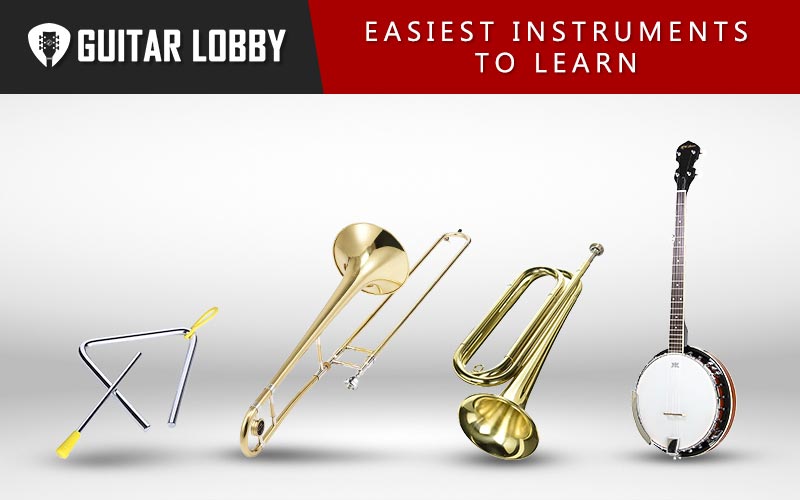
If wondering what is the easiest instrument to learn and play stick around. I've listed and ranked 17 musical instruments that you'll likely want to learn more about. Of course, you're more than welcome to share with me your opinion at the end of this article.
Table of Contents
- Here Are the Easiest Instruments to Learn and Play
- 1. Triangle
- 2. Maracas
- 3. Castanets
- 4. Bongos
- 5. Tambourine
- 6. Xylophone
- 7. Harmonica
- 8. Recorder
- 9. Bugle
- 10. Trumpet
- 11. Trombone
- 12. Ukulele
- 13. Lyre
- 14. Banjo
- 15. Bass Guitar
- 16. Acoustic Guitar
- 17. Flute
Here Are the Easiest Instruments to Learn and Play
1. Triangle
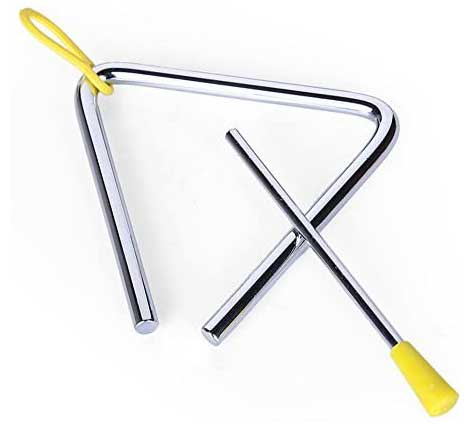
Most people forget that the triangle is also a musical instrument. In fact, it is the simplest instrument you can ever find in an orchestra.
I know I got you raising your eyebrows there. I bet you did not know that a triangle can spell – or should I dare say, "ping" – the success of a musical piece.
There was this story about how Leonard Bernstein had to stop the rehearsals of the New York Philharmonic orchestra simply because George Plimpton couldn't produce three similar sounds of the triangle. The piece only requires 3 pings, yet Bernstein had to interrupt the rehearsal every now and then.
While the triangle is very easy to play, you have got to have a very strong hand muscle memory. You should be able to strike the triangle at the same position and with the same amount of force. This is the only way you can ensure the uniformity of the sound.
Playing in an orchestra is one serious business. If you want to have more fun, then you should go freestyle. I recently watched a video of Foo Fighters playing in a sold-out concert at the Wembley Stadium in London. The band's percussionist, Drew Hester, performed an engaging and electrifying triangle solo.
Who would have thought that a simple instrument as a triangle can also electrify the crowd? It was almost impossible to hear the unique pings of the triangle because of the crowd's roar.
So, there are two things you really must develop when learning to play the triangle.
The first one is you must sharpen your listening skills. It is important to distinguish the kind of sound produced when you strike two metals. Everything depends on the angle of approach of the stick relative to the position of the triangle. You can have a flat sound, a sharp ping, or a resounding boom.
The second thing you need to develop is your hand-ear coordination. Yeah, I know I made that up. It should be hand-eye-ear coordination. However, playing the triangle requires hitting the instrument with precision. You will have to listen to the sound produced by the triangle, look at where you struck the triangle, and then decide whether it is the kind of sound that the music piece really requires.
I know it's a bit complicated. But, get it right and you could be performing a triangle solo in a matter of days. In my opinion, the triangle is the easiest instrument to play.
2. Maracas
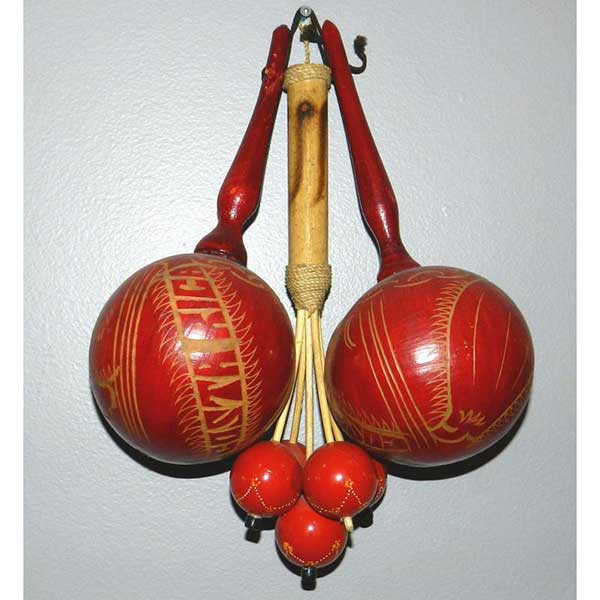
Did you know that one of the very first musical instruments that a baby can play is the maraca? Well, not exactly a maraca, but a baby rattle does resemble that of a maraca. Wouldn't you agree?
I don't know if you can still remember shaking that colorful rattle when you were still a baby. The sound the toy created somehow calmed our nerves and helped in the development of our brains.
The maraca is a lot like a baby rattle toy. You shake it and it produces a distinct sound. Depending on how you shake the instrument, you can create a rhythm that you can swing to. That is why I consider this one of the easiest musical instruments to play. You have already been exposed to it even before you learned uttering ma-ma and da-da.
Don't ever think that the maraca is not an important musical instrument. Otherwise, our Latino brothers and sisters will give you that cursive look. Maracas are a very important part of Latin American culture. It is an integral element of folk dances.
Today, pop groups and even some orchestras integrate the maracas in their repertoire. These instruments are an important part of the percussion ensemble, like drums, tambourines, and the like. Even grade school teachers use maracas when teaching music to children.
What many of us don't know is that this musical instrument can also produce different kinds of sound. One maraca may have a higher pitch or note than another. That is why many composers choose the right kind of maracas to use in their pieces. They want that distinct rattling sound that maracas have to offer to give a new dimension to the music piece.
So, what does it take to be a master rumba shaker? Shaking the maracas like a pro requires an understanding of the basic maraca rhythm, including the 'bolero', the 'son', the 'son montuno', and the fast guaracha'.
An important aspect of maraca playing is the flexibility and strength of your wrists. Both should be strong enough to hold the maracas and flexible enough to allow for ample shaking movement. Having arthritis would be a bummer.
Once you have mastered these basics, you should be well on your way to becoming a skilled rumba shaker. You'd be another Frank "Machito" Grillo or any of the other maracas greats.
3. Castanets
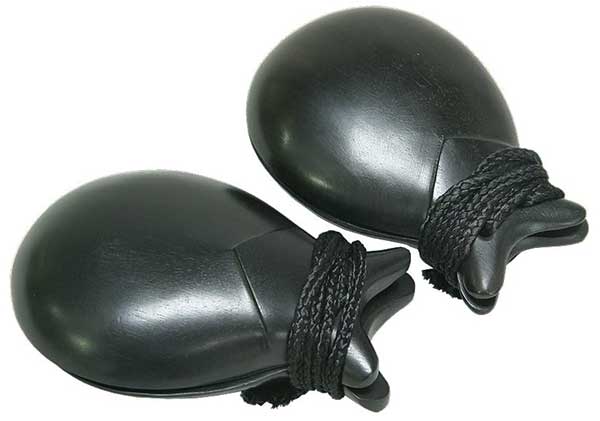
Most people would not even consider castanets as musical instruments. And I can truly understand why they think this way.
Castanets are hardly the kind of instrument that you would see being played by serious musicians. After all, how can two pairs of hand clackers play a significant part in a major music ensemble?
You'd be surprised!
Try listening to the "Concertino for Castanets and Orchestra Three Anecdotes" of Leonardo Balada. If you cannot get a hold of this 1977 masterpiece, you should check Helmut M. Timpelan's "Concertino fur Kastagnetten und Orchester".
Famous Mexican musician, dancer, actress, and choreographer, Sonia Amelio, is already known for playing castanets as if these were the most important instruments in the music world. You can also check a Festival Toccata, especially one by Allan Stephenson.
If these pieces don't ring a bell, then the flamenco should.
As a matter of fact, many Spanish folk dances use castanets. These include the 'sevillanas' and the 'escuela bolera'. Just so you know, the latter is a ballet form of dance that uses castanets.
I didn't mean to intimidate you. I just wanted to point out that the castanets can be an amazing musical instrument, too. The best part of all of this is that it is quite easy to learn.
Castanets come in two pairs, one for each hand. Always place the "Hembra" in your dominant hand and the "Macho" in your non-dominant hand. The Hembra has a higher pitch than the Macho, signifying the female and male voices.
Always start by practicing a simple castanet roll. Do this with the Hembra. From your pinkie to the index finger, tap the castanet's top to produce the clicking sound. This is your basic RRI roll.
Once you have mastered the art of tapping the castanets with your fingers in succession, you can start adding rhythm. This is where the Macho comes in. The basic rhythm is one click of the Macho for every cycle of the Hembra. Your ring and middle fingers should tap on the Macho while your index finger taps on the Hembra. Castanet players call the sound produced on the Macho as the "TA".
Master this basic rhythm and you can start introducing other sounds. Everything is about finding the right rhythm to accentuate the music piece you want to play.
4. Bongos
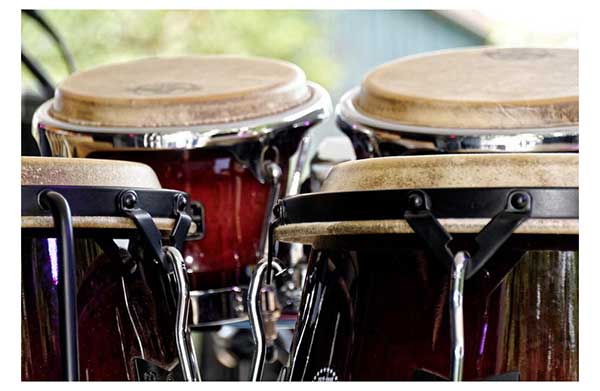
Percussion instruments are some of the easiest instruments to play. These instruments generally provide rhythm to a music piece. And in the hands of a master drum beater, percussion instruments can also be perfect for a solo performance.
That is why I am inclined to include the bongo drums in this list. It does not take much to become a skilled conguero.
These musical instruments are very popular in Afro-Cuban music. One thing that I find interesting about bongos is that they always come as a pair. In fact, they are also named Hembra and Macho, like that of the castanets.
One bongo is larger than the other. Like the castanet, the larger bongo is the Hembra and provides a higher pitch. The Macho is the masculine version of the bongo. It sits right in front of the left knee of the player. This is if the bongosero is right-handed.
So, you have two drums that you place in front of your knees while you are seated. If you're right-handed, then you should always place the Hembra or the larger bongo on your right. The Macho bongo will sit on your left.
Playing the bongo is a lot like playing a drum set. The advantage is that there are no additional elements to confuse your brain and make learning a bit more complicated.
There are no toms, no bass drum, and no hi-hats. You are only going to focus on the pair of drumheads right in front of you. You will also not have to worry about drumsticks. There are no fancy stick tricks to learn. All you will be relying on is your sense of rhythm and flexible wrists.
You see, the way to play the bongo like the pros of Cuba is by using your fingers and the palms of your hands. You will only be using these parts of your body for striking the surface of the drumheads.
Mind you, it is only the edge of the bongo drumheads that you will be striking. You can always move on to the next step in bongo playing. You can try "glissando" which involves rubbing your middle finger across the drumhead. It should be a walk in the park from here on.
5. Tambourine
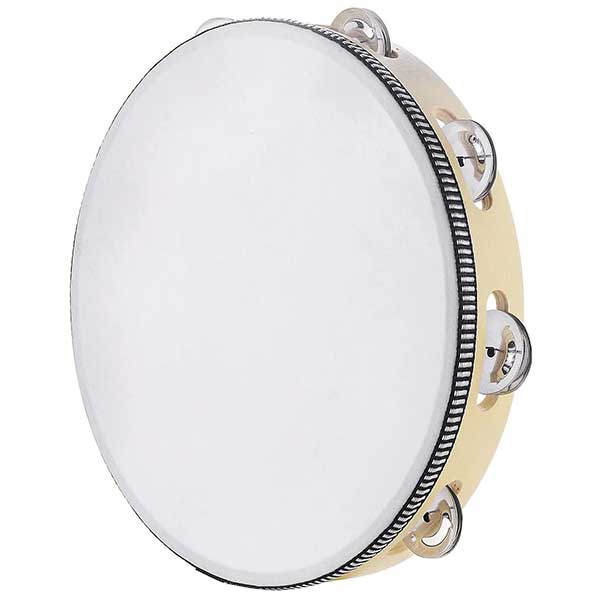
Many people shun away from the tambourine because it lacks the appeal of more 'mainstream' musical instruments. It is not as classic as a piano or a violin. It also lacks the oomph of a drum set or the power of a French horn. It is also quite rare to find tambourines in an orchestra.
However, if you are fond of folk music, then you know that the tambourine is more important than any other instrument. This hand percussion instrument is a mainstay in folk music in Turkey, Greece, Iran, and Italy.
Oh, before I forget. Have you ever attended mass at a gospel church where you have the choir singing praises to the beat and rhythm of a tambourine? The instrument also has its place in rock, country, and pop music. I have also heard it played in samba.
Never underestimate the value of a musical instrument simply because it doesn't look as grand and intricate as other musical instruments.
Playing the tambourine is easy. However, it does require a few basic things to get you started on tambourine playing.
First, you will learn how to hold the tambourine properly. One problem with the tambourine is that it is one of the noisiest musical instruments to pick up. That is why you should be very careful when picking it up so that the jingles will not clang into each other.
Always hold the tambourine with your non-dominant hand. Your dominant hand will be the one doing the striking of the head.
Second, there are 6 fundamental techniques for playing the tambourine. One technique is the "slow-loud" technique. This is perfect for slow rhythms at a music dynamic of at least mezzo forte.
There is also the "slow-soft" technique, which focuses more on the distinct high-pitched sound of the jingles than the low-pitched sound of the head. This is ideal for playing music with a dynamic that ranges from pianissimo to mezzo-piano.
The "fast-loud" technique is what tambourine players call fist-knee or hand-knee technique. It involves alternately striking the tambourine head with your hand and your knee. It may sound unusual at first, but the sound the tambourine creates is something else.
The three other techniques include the fast-soft, shake rolls, and the finger or thumb rolls. Master these techniques and you are ready to unleash your tambourine playing skills.
6. Xylophone
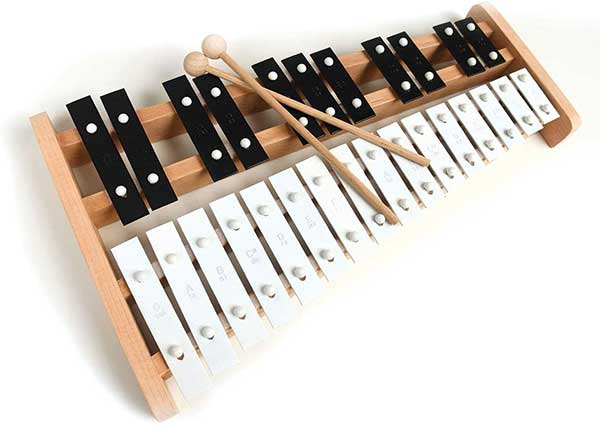
Here's another musical instrument straight from the treasure chest of a young child's playroom. I can still remember having my very first xylophone and I cannot help but smile when I see young children banging the different colored bars of the xylophone to their heart's content. It sure is fun to play.
But the xylophone is not merely a child's toy. It is one of the oldest musical instruments we have. Some say that the earliest xylophone could be the Chinese harmonica-like instrument determined to have been around since 2000 BC.
The musical instrument is very popular in Southeast Asian countries. Malay-Polynesian peoples brought the instrument to East Africa sometime in 500 AD. No wonder these two regions have a very common musical instrument in the xylophone.
I do have to stray a bit in my discussion because there is a bit of confusion about what a xylophone really is.
If you ask people today, they will refer to a xylophone as a musical instrument that has metal bars in different lengths that produce different notes.
Unfortunately, they are referring to a glockenspiel. The musical bars of a xylophone are always made of wood.
Learning to play the xylophone is a lot easier than playing the piano or even a keyboard. If you look at the design of the xylophone, the bars are like the keys on a piano. Each of these keys has a distinct pitch that represents a note in a musical scale.
Now, here's the difference. Creating sound involves striking the wooden bars with a mallet and not your fingers. This requires precision and good hand-eye coordination. You will want to strike the correct bar to produce the correct tone.
Holding the mallet correctly is important. You need to be relaxed and have a balanced posture to play the instrument. Always hold the mallet by pinching it first like a chopstick using your index finger and thumb. You can then wrap the other fingers around the mallet.
Why should you learn to play the xylophone? Well, if you are a big fan of Pink Floyd, you will know that one of the most underrated releases of the progressive band featured the xylophone and many other 'unusual' musical instruments.
The xylophone may be made of wood. But it sure can deliver a musical experience like no other. The first 6 musical instruments I shared with you come from the percussion family. They are very easy to play because all they ever truly require is mastery of rhythm.
Now, it is time to get to the next family of musical instruments, wind instruments. This is a very large grouping. These are some of the easiest instruments to learn. Let's start with the harmonica.
7. Harmonica
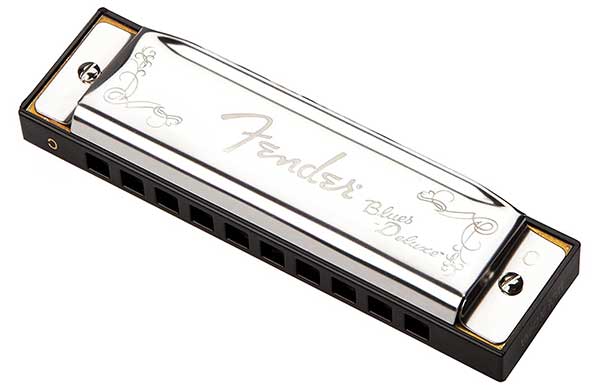
I consider the harmonica as one of the easiest wind instruments you can play. It is also one of the most versatile. You can hear musicians play it in different genres. From the soulful blues of the South to folk music, jazz, rock, country, and even classical music, a harmonica delivers a tune that is perfect for any music.
What makes the harmonica so easy and fun to play is its size. There is the 10-hole diatonic harmonica and the 16-hole chromatic harmonica. Regardless of the size, you can easily slip a harmonica into your pocket.
The compact design of the harmonica is perfect for playing tunes and melodies wherever you are. I know of soldiers who ship out their harmonica to brighten up the mood of everyone else after a lull in the battle.
I also know about children with special needs who were able to communicate their thoughts using this musical instrument.
Did you know that the harmonica is one of the very few musical instruments that allow you to produce a tone during both inhalation and exhalation?
Most wind instruments produce sound only when you blow air through them. The harmonica also produces sound when you inhale. For example, a diatonic harmonica that's tuned to the key of C when you blow through the mouthpiece will also produce a tune in the key of G when you inhale.
Another thing is that the holes of the harmonica are spaced close together that it would be impossible to blow only one hole. In most cases, you will be blowing through 3 holes.
Everything's good, though. You have 3 different notes that complement each other. And when you inhale, you will be producing three different complementary notes again. The result? A beautiful harmony. No wonder they call it "harmony-ca".
There is one definite benefit to this. It is easy to fool people that you are a good harmonica player because they will not be able to pinpoint the off notes and all that stuff. Only fans of the harmonica will be able to know if you're faking or not.
I am not saying that you can be a good harmonica player overnight. There are techniques to master and even styles to perfect. It should still be a good musical instrument to build your confidence and enhance your musical intelligence.
8. Recorder
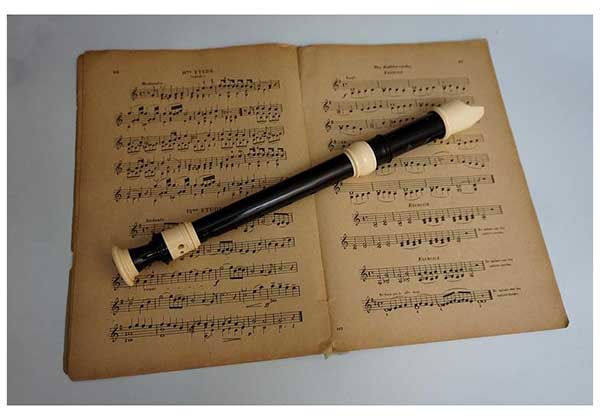
Before you get a flute to play with, I suggest getting a recorder first. I know of many schools that use this instrument to teach young children. Not only is it a very simple musical instrument, but it is also quite easy to play.
Absolute newbies to music instruments can mistake a recorder for a flute. This is because they look the same. The only difference is the design of the holes in the tube. A flute typically comes with flaps that cover the holes. A recorder doesn't. You will have to rely on your fingering skills to cover the hole or holes on the recorder to produce the right note.
One thing that makes the recorder so easy to play is its whistle mouthpiece. You do not need iron lungs to produce sound with the recorder, unlike the tuba or the French horn. The key here is to place only the tip of the mouthpiece. If you can feel the mouthpiece with your teeth, you are doing it wrong.
You only need to blow through the mouthpiece gently.
A very crucial skill of playing a recorder is tonguing or the use of one's tongue to separate each musical note. Thankfully, there is a way you can master the tonguing skill of a recorder player. Just practice saying "du" several times. Notice the position of your tongue while you are saying this. This is the exact position of your tongue whenever you start a note with the recorder.
Next is the fingering technique. Regardless of your hand preferences, your left hand should always be on top. The index, middle, and ring fingers of your left hand should cover the first 3 holes of the recorder from the top. The index finger to the pinkie of your right hand will cover the remaining 4 holes in the lower section of the musical instrument.
Make sure to cover the holes with your finger pads. This creates a perfect seal over the holes.
And that's it. All that is left for you to do is to learn the basic notes on a scale. How easy is that!
9. Bugle
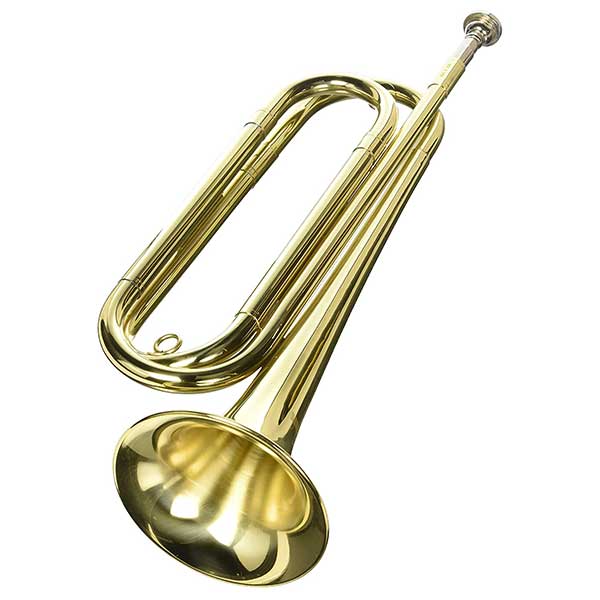
I know the bugle is hardly the musical instrument you can expect to find in an orchestra. This is an instrument that we all associate with boy scouts, marching bands, and military installations.
However, just because it has 'limited' use doesn't mean you cannot create music out of it anymore. You still can. The best part of it is that learning to play is also easy. Well, that is if you have excellent mouth and tongue play.
The classic bugle is a very simple brass instrument. You have a hollow tube that coils into an oval shape that terminates into a wide bell. There are no holes or valves to produce different notes or pitches. The notes and pitch that you produce will depend solely on your embouchure.
Unfortunately, this is also the reason why I couldn't put the bugle at the top of this list.
Yes, the bugle is a very simple musical instrument, no simpler than blowing air through a mouthpiece, a long coiled tubed, and a large bell at the end.
And yes, there are no holes to fret about whether you are covering them tightly with your fingers or not. There are also no valves or keys that you must constantly guess whether you are closing the correct keys or not.
However, that is just the thing. All the controls will come from your mouth and the movement of your tongue. If you want a high pitch, then you will have to be more forceful in blowing air through almost-sealed lips. And if you want a low pitch, then you will have to part your lips a little wider.
And that is only on the pitch. There is also the note that you must produce using an interplay of tongue movements, lip opening, and amount of air to blow.
The good news is that the notes that you can play with a bugle are limited. This is where the fun part is. If you can master your embouchure and tonguing techniques, you can be as creative as you want.
You can play a soft and somber bugle call like the American Taps. This tune never fails to give me goosebumps. The American Reveille is always a classic for waking up your buddies after a night of overflowing booze. I think most people would agree that the bugle is one of the easiest instruments to learn and play.
10. Trumpet
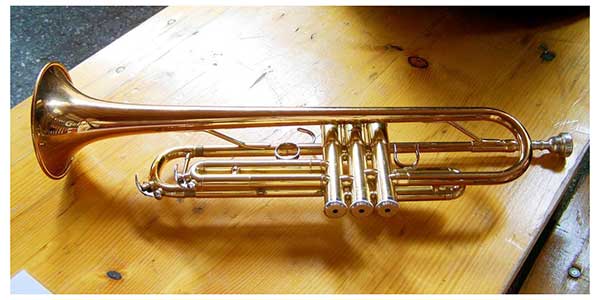
Have you listened to Miles Davis's most iconic track from his 'Kind of Blue' album? The opening bars of the 'Freddie Freeloader' are so enthralling that you feel like you're being ushered into a magnificent home.
Did you also notice that there are only four notes in the opening bars? Yes, that's right. The notes were only A, G, D, and C.
These four notes were enough to stir the soul.
However, I wouldn't dare say that the trumpet is an easy musical instrument to learn to play. It may look easy, but it is a bit tricky. There are a few technicalities that one must hurdle to produce a musical sound.
A critical technique here is correct blowing. Your lips should always be closed tightly. You are also supposed to blow or exhale in a very steady manner. Trumpeters always say that you should never puff your cheeks out. It is also crucial to keep the tightness of the lips throughout the blowing of the trumpet.
The key here is to let your lips vibrate without losing their seal over the mouthpiece opening. If you feel your lips vibrating, then you are on the right track. Vibrating your lips slowly will produce a low tone. The faster the lip vibrations, the higher the notes.
Once you've mastered the blowing technique, you can begin with the fingering technique. There are three valves on the trumpet that you will need to push down to produce a different note. For example, blowing the trumpet without pressing the valves will produce a note in the key of C.
Blowing the trumpet while pressing the first and third valves will produce a note in the key of D.
As you progress through the harmonic scale, your lip vibrations also become faster. As such, if you want to produce a note in the high C, then you will have to release the valves while vibrating your lips very fast.
The finger movements for G is like that of C. The difference is that the lip vibration for G is faster than the one in C.
As you can see, it is quite easy to play the trumpet if you get the blowing and fingering techniques right. I suggest playing the 'Happy Birthday" song or 'Old MacDonald Had a Farm' for starters.
11. Trombone
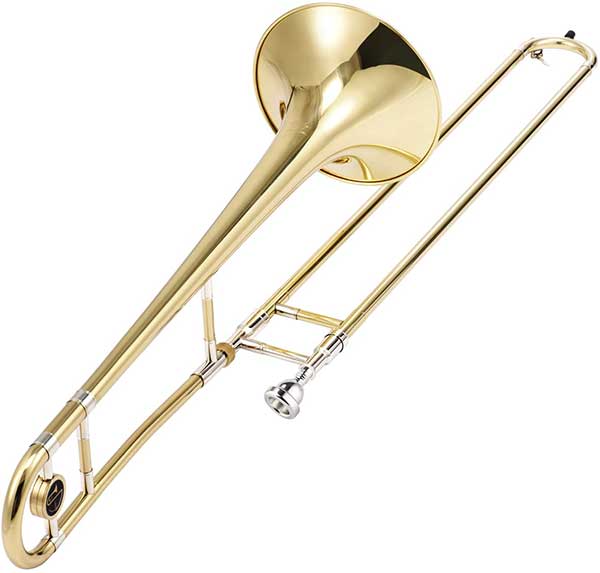
If you're looking for the easiest instrument to play, the trombone might be a good choice. It has many similarities to playing the trumpet. The difference? Well, the trombone does not have any valves that you can manipulate to produce the kind of sound that you want. What it has is a sliding mechanism that allows you to change the pitch.
Some say that playing the trombone is a lot easier than playing the trumpet. This is because blowing through it does not require very precise control of the lips and the movement of the tongue. You will still need a good embouchure, though.
Perhaps what makes the trombone quite tricky is that it's quite easy to slide the tube in a less than accurate manner. This can produce a less-than-pleasant note.
There are several techniques that you must master before you can even start calling yourself a student of the trombone.
First, blowing the trombone. Unlike the trumpet, you do not need to close your lips tight. The shape of your lips is like that of pursed-lip breathing. Like the trumpet, you are also expected to maintain the shape of your lips and never puff out the cheeks.
The blowing techniques for the trombone are also like that of a trumpet. Blowing slowly will produce a low-pitched sound. As you pick up the speed of blowing through the trombone, you also get an increase in the pitch.
Second, the sliding technique. You can look at this as the fingering technique in the trumpet or any other brass instrument with valves. There are 7 positions on the sliding tube of the trombone. These represent the 7 notes on the musical scale.
Unfortunately, it would be a mistake to say that blowing softly without sliding the trombone will produce a C. Doing so will produce a B-flat. If you want to produce a C, you will need to position the trombone slider to the 6th position. This is because the trombone works best in music written in the F-clef or bass clef. Most of the musical notations written for brass instruments are in either the C- or G- clef.
You should be okay if you also learn to read the musical notations for a trombone. I suggest starting with the 'When the Saints Go Marching In".
12. Ukulele
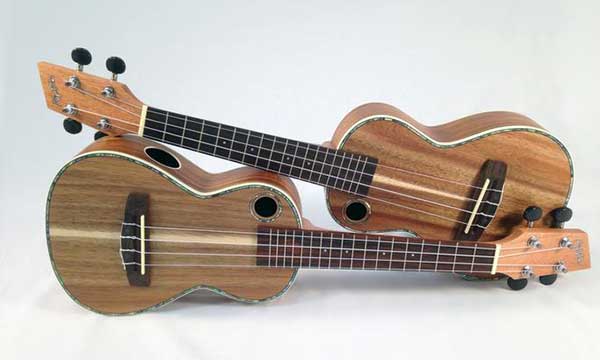
If you're a bit intimidated by the guitar, then you should try the ukulele. It looks like a smaller version of the most popular string instrument. However, do not ever think that this small guitar-like contraption is also small on fun. If you'd ask me, I'd say the ukulele is more fun to play than the guitar.
The ukulele is one of the most social instruments you can ever learn to play. The moment you place it across your chest and begin strumming a few notes, people will know that they will have lots of fun.
Anyone can play the ukulele. Even if you are still playing with your LEGO blocks or are already enjoying the sunset with a large Havana cigar in your lips, it is never difficult to learn how to play the ukulele.
The notes that ukuleles produce is warm that can put a fantastic smile on the face as well as the faces of everyone else within hearing distance from your playing. It can be an excellent way to spice up the gang right by the beach or while having some scrumptious pit fire barbecue with beer.
And for the romantic, the ukulele can be a remarkable instrument to make it easier for your partner to warm up to you.
Playing the ukulele is easy because of several reasons. First, it's small. Handling it should be a breeze. You can execute some fancy tricks, while giving the strings a wonderful strum.
Second, the fretboard is also small. Pressing on the strings and holding the neck are effortless.
Third, there are only four strings to worry about. The guitar has six. As such, even if your fingers are as stiff as a person with arthritis, the music you produce with the ukulele will still be appreciated by those who hear it.
Fourth, the strings are made of nylon. Cutting your finger pads are the least of your worries.
Fifth, it is easy to adapt the ukulele to any song. I had a friend who did a crazy ukulele rendition of Pantera's 'Cemetery Gates' and Ozzy Osbourne's 'Crazy Train'. He played the ukulele as if it was an electric guitar.
What I am trying to say is that, don't be fooled by the ukulele's toy-like appearance. It can also be a wonderful musical instrument if you give it a try.
13. Lyre
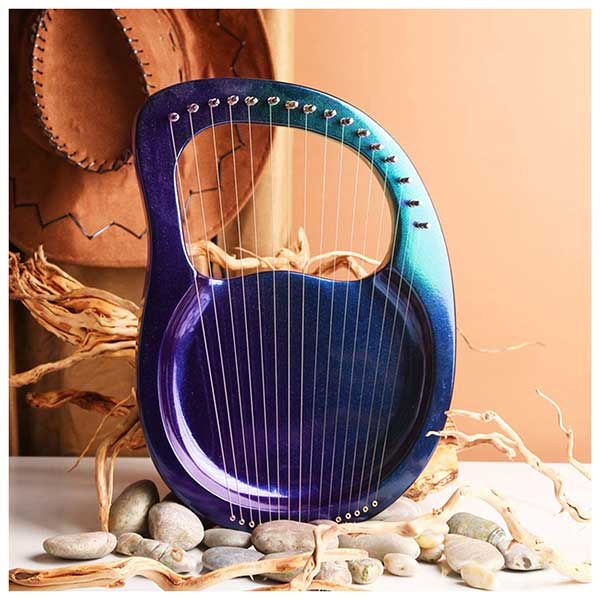
Ancient Greeks long revered the lyre as a symbol of moderation and wisdom. They say that this musical instrument is a very important attribute of the Greek God, Apollo. And when you see images of ancient Greece, you will always see the lyre.
The sound created by a lyre is almost like a harp, except that there are more strings in a harp than in a lyre. In ancient times, lyres only had 4 strings to pluck or strum. By the 5th century BC, the number of strings in the lyre tripled to 12. Today, lyres often come with 7 to 10 strings.
Because there are fewer strings in the lyre, the depth and richness of the melodies are not as intense as that of a harp. This doesn't mean the sound it produces is already mediocre, unworthy of your attention.
The lyre can still produce mesmerizing music in the hands of a master lyrist. He can transport you to the golden age of the Greek heroes and bask in the splendor of Olympus.
Learning to play the lyre is like playing the harp. The only difference is that you have a lesser number of strings to strum or pluck. This helps minimize the confusion that may arise from picking the correct string.
If you start with a 4-stringed lyre, your musical journey will be so much easier. All you ever need to master is the correct sequencing of the different strings to produce a discernible melody. There are no embouchures to worry about. You can immerse yourself in the melodies that you produce.
If you decide to use a 7- or 10- stringed lyre, then the chances of plucking the wrong string also increase. This is where you will have to rely on both your sense of hearing and sense of seeing.
Most lyre teachers start with the basics. They can then move on to facilitating the understanding of the different modes of lyre playing used by the ancient Greeks. From here, the student learns how to tune his or her lyre. This is important before the pupil can start learning a few basic melodies.
One of the best things about playing the lyre is that you can strum the strings like you would a guitar. Many of the guitar players I know transitioned into lyre playing very easily.
14. Banjo
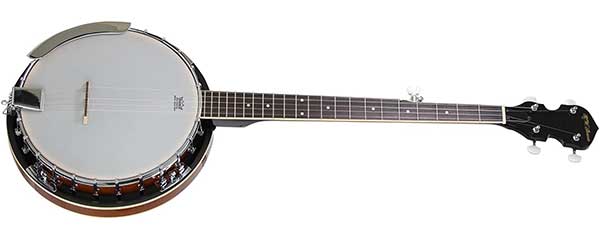
No one knows the exact origins of the banjo, although some suggest that it may have an African origin. The very first people known to use the banjo were the West African people who were sold in the Caribbean sometime in the 17th century. A century later, the musical instrument already found its way to the north.
The banjo is as fun to play as the ukulele. It is also not that difficult to learn. As a matter of fact, I find playing the banjo to be a lot easier than a guitar. There are several reasons for this.
This musical instrument comes with an open-G tuning. You strum the strings as a group. And if it sounds like the G note, then you are good.
There are not that many strings to play on a banjo. The simplest banjo can only have 4 strings, like the ukulele. Of course, if you want to challenge yourself, then you can pick a banjo with 5 or even 6 strings.
Three, the neck is also slimmer than that of the guitar. This is good news for those with small hands. They can easily wrap their hand around the neck and press on the strings.
Four, the strings are also thinner compared to guitar strings. Unfortunately, there are two sides to this. A thinner string means easier fretting. The downside is that it can be quite sharp if you are not careful in your fretting techniques.
Five, don't ever think that the banjo is only for folk and bluegrass music. Whatever music genre the guitar can play, you can also expect the banjo to be up to the task.
Not convinced? What if I told you that some of the biggest names in the music industry have used banjo in many of their hits? You have Led Zeppelin and The Eagles as good examples.
Like everything else, learning to play the banjo requires practice. You must exercise your fingers so that they will become more flexible. You will also need to master the claw-hammer style, although there are now different techniques for creating fantastic melodies.
Now, wouldn't you say the banjo is one cool musical instrument to play?
15. Bass Guitar
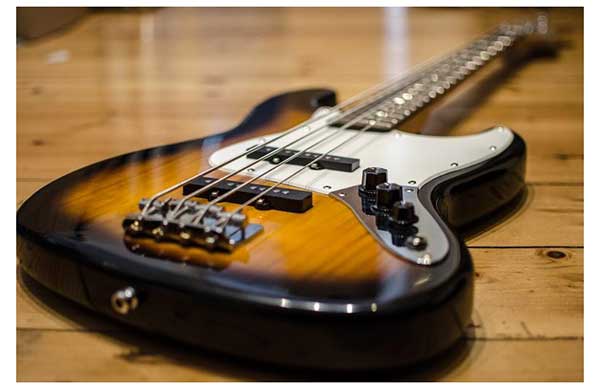
I like to look at bass as the soul of any given music. Don't believe me? Try to listen to Paul McCartney's 'Come Together' or even the 'Sex Machine' by James Brown. The bass is hypnotic, almost like a mantra. You can listen to the sound over and over without ever growing tired of it. And the more you listen to it, the more profound it becomes.
Such is the power of bass in music. And when it comes to string instruments, nothing beats the bass guitar.
That is why I have decided to include it in my unofficial list of the easiest instruments to play.
Unfortunately, the bassist often does not enjoy the same admiration, accolade, and respect that the other members of the band get. Many people think lowly of the bass guitarist. They think that a bassist only serves a supporting, insignificant role to the lead guitarist and even the drummer.
I have to say that the bassist and the drummer form the very foundation of the music. You can think of the bass guitar as the string instrument equivalent of the drum. It sets the rhythm. It also provides a low note that can provide depth of character to the music being played.
And do you know the best part? Learning to play the bass guitar is incredibly easy.
A bass guitar has four thick strings. These are necessary for creating that deep, low tone that bass is known for. The strings are in the G, D, A, and E notes. The neck of the bass guitar can have anywhere from 20 to 24 frets.
The tablature for a bassist is also easier to read than your usual guitar tabs. The tablature will have the four strings and the number of the fret that you need to press.
For example, if there is a '3' in the E string, then you should press the third fret of the E string while plucking the same string. Most of the tabs do not have markings for rhythm, unfortunately. You will have to use your listening skills to determine the correct rhythm to follow.
It really is easy to play the bass guitar. However, you should never be content on learning the basics. You can always push yourself to discover more things about how to play this guitar.
16. Acoustic Guitar

Some folks may argue that the guitar is one of the most difficult musical instruments to play. I can't blame them. The guitar is indeed a difficult instrument to play with.
However, like any other instrument, everything depends on one's commitment to learning the musical instrument and getting good at it.
Can you learn how to play the guitar overnight? Yes, of course. Will you be able to perform like Eric Clapton or even Adrian Legg in a few days? No, of course not.
The point here is that everything starts with the basics. You can still become a great acoustic guitarist, provided you stay focused on what you want. One of the most important things for learning how to play the acoustic guitar is finger flexibility.
Playing the guitar requires pressing the strings on the fretboard with the fingers of your non-dominant hand. You hold the guitar neck from the back so that your hand forms an arc over the backside of the neck.
To produce the different notes in a piece, you will have to position your fingers at different points in the fretboard. If you have arthritis or some other condition that limits the mobility of the finger joints, then I can only imagine how difficult it will be to learn to play the guitar.
On the plus side, I think the guitar tablature is a lot easier to read than the notations for other musical instruments.
So, how do you play the guitar? My suggestion is to start with the basic notes of a music scale, especially those intended for guitars. You may want to practice with the correct positioning of the fingers for each note.
Certain notes may require more fingers to cover the points on the fretboard. Sometimes, some points are spaced far from each other. Don't think about the plucking and strumming yet. You can always learn that after you have mastered the positioning of the fingers for each note.
I think it is also important for you to learn how to tune your guitar, although there are now mobile apps that can simplify the process for you.
From here, you can move on to learning the different strumming patterns and rhythms.
One good thing about learning to play the guitar is that you will never run out of interesting YouTube guitar-playing videos.
17. Flute
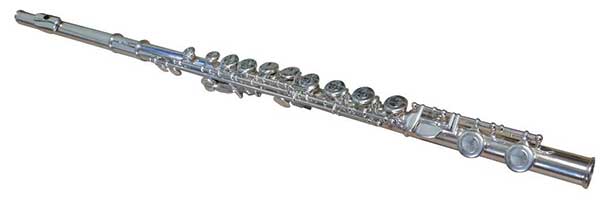
There is something magical about flutes. These instruments have a poetic characteristic that is full of grace, richness, and softness. The melodies are almost ethereal, as if whispering or whistling to your very soul.
What is amazing about this instrument is that it is also relatively easy to play. If you started your musical journey on the recorder, the flute is the logical next step.
The flute that we are going to talk about here is the transverse flute. It differs from a recorder in the positioning of the instrument relative to the body of the player and the covering of the holes.
A recorder is held in a vertical position, following the long axis of the body. You hold it right in front of your body.
The transverse flute requires the player to hold the instrument to the right side of his body so that the flute will be almost parallel to the ground. The positioning of the fingers is essentially the same as that of a recorder. The left hand will always play the flaps nearest to the mouthpiece.
So, why is the flute a bit more difficult to learn than the recorder?
Both recorders and flutes require airflow to produce sound. The advantage of a recorder is that the mouthpiece is designed in such a way that the passage of air is already fixed.
A transverse flute doesn't have that structure. As such, the passage of air through the tube depends on your control of your lips as well as that of your breathing.
Have you tried sipping hot soup from a spoon? Notice the shape of your lips? This is the classic shape of the lips that a flute requires. You will also have to blow air softly and consistently.
If you master these techniques, it is easy to play the flute. If you want to play a high pitch, then you need to narrow the opening of your lips. You will also have to blow air fast. A wide-open mouth and a slow breath can produce a low-pitched sound.
Tongue movement is also important. Try saying "too-too" and notice how your tongue moves. That is how you will push air through the mouthpiece.
If you ask me, playing the flute is still a lot easier than playing a French horn.
The following musical instruments are not as easy to play as the first 9 instruments I shared with you. However, these instruments can very well be on the next phase of your musical journey.
Playing a musical instrument is not for everyone. One must have the patience to do the same thing over and over to gain mastery of a specific aspect of music playing before one can move on to another aspect.
However, I do believe that starting your journey with any of these 17 musical instruments should get you on the right track. It should help you gain confidence and build on it as you learn the rudiments of music playing. Who knows you might discover that you have a unique musical intelligence that you have never known before.
Give any of these musical instruments a try if you haven't done so yet. If you disagree with this list, let everyone else know what you think is the easiest instrument to learn and play below!

My name is Chris and I've had a passion for music and guitars for as long as I can remember. I started this website with some of my friends who are musicians, music teachers, gear heads, and music enthusiasts so we could provide high-quality guitar and music-related content.
I've been playing guitar since I was 13 years old and am an avid collector. Amps, pedals, guitars, bass, drums, microphones, studio, and recording gear, I love it all.
I was born and raised in Western Pennsylvania. My background is in Electrical Engineering, earning a Bachelor's degree from Youngstown State University. With my engineering experience, I've developed as a designer of guitar amplifiers and effects. A true passion of mine, I've designed, built, and repaired a wide range of guitar amps and electronics. Here at the Guitar Lobby, our aim is to share our passion for Music and gear with the rest of the music community.
Source: https://www.guitarlobby.com/easiest-instruments-to-learn-and-play/
0 Response to "What is the Easy Instrument to Play"
Post a Comment